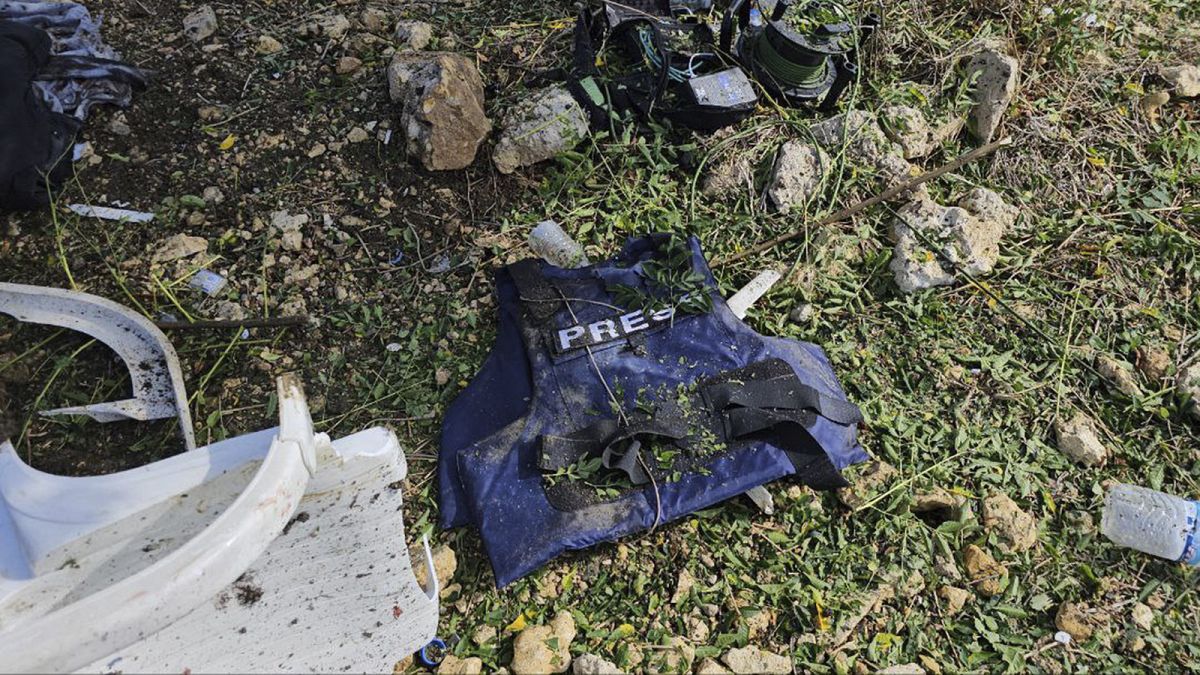New Mexico
Homelessness in New Mexico has increased by 48% in the past year

Pastor Joanne Landry shows the shower facility outside the Compassion Services Center in southeast Albuquerque, Oct. 30. (Photo by Caleb Scott/Cronkite News)
ALBUQUERQUE, N.M. – After declining for almost a decade, New Mexico’s homeless population has increased by 48% from the previous year. According to a report released by the New Mexico Legislative Finance Committee, this spike is primarily due to housing shortages and rising rents.
The report said rents in New Mexico increased by 70% from 2017 to 2021 while wages increased by 15%. Zillow reports the average price for a home in New Mexico in January 2017, was $173,063; in the current market, the average New Mexico home has increased to $293,040. For the U.S. as a whole in the same period, the average price for a home went from $206,839 in January 2017 to $346,653 in 2023.
To combat housing costs, the Albuquerque Housing Authority, AHA, has implemented a voucher program for low-income individuals. Households assisted through the Housing Choice Voucher Program pay 30% of their income toward rent. AHA pays private landlords the difference between what participating households pay and the rent for the units. Through this program, the AHA says, over 4,000 Albuquerque households receive rental assistance.
“If you look at the minimum wage, someone would have to work two or three jobs just to get an apartment,” said Tony Watkins, the continuum of care coordinator with the New Mexico Coalition to End Homelessness, a nonprofit organization founded in 2000 by a group of nonprofit agencies and the New Mexico Mortgage Finance Authority
Watkins said that in addition to race and gender identity, “landlords cannot officially discriminate against someone based solely on social class,” under the human rights ordinance. One of the things the coalition will be working on for the next legislative session is eviction prevention.
Watkins said that there is institutional racism built into the system that disproportionately affects certain groups of homeless individuals who should be receiving support. “We have way too many Native and Indigenous people that have been undocumented as experiencing homelessness.”
According to Watkins, this racism can be traced to the program begun in 1934 by the Federal Housing Administration to insure home mortgage loans. “Ninety percent of those loans for the first 20 to 30 years went to white families,” he said. “Insurance companies backed by the federal government deliberately would get a map and draw red lines around neighborhoods that weren’t considered worthy. And most of those people were inner city and people of color.”
These affected communities were denied credit to either buy or fix up their houses, Watkins said. The racial makeup of Albuquerque reflects this. Most of the white population lives on the eastern side of the city, where housing costs are higher, while the majority of the Hispanic population lives on the inner and southwest side of the city.
Discrimination was prohibited by Title VII of the Civil Rights Act of 1968 “concerning the sale, rental, and financing of housing based on race, religion, national origin, sex, (and as amended) handicap and family status,” according to the Department of Housing and Urban Development.
Despite the Civil Rights Act, the legacy of decades of discrimination is still seen, including in this study from the Massachusetts Budget & Policy Center that showed in 2019 “only 44.6% of Black households, 48.1% of Latinx, and 57.1% Indigenous, Asian, or Pacific Islander households owned their homes compared to 73.7% of White households.”
“I think the system is not designed in a way that people really know exactly where to go to get the help that they need,” said Monet Silva, executive director of the New Mexico Coalition to End Homelessness. According to Silva, many of the coalition’s programs provide support to individuals and families where they most need help, such as with mental illness.

The Compassion Services Center in the International District of Albuquerque on Oct. 30. (Photo by Caleb Scott/Cronkite News)
“We need that intensive support for families on their own terms in their own home, focusing on their strengths to help them problem-solve because families are the best solutions to their problems,” Watkins said.
The coalition administers housing programs both in Albuquerque and throughout the state for people who are homeless. It maintains a local, centralized database of information on clients and their needs that enables the organization to coordinate services with partner providers throughout the state. People are evaluated to determine individual vulnerabilities, disabilities and factors such as whether someone is a survivor of domestic violence.
Alexandra Paisano is the coordinator for the coalition’s Coordinated Entry System, a process whereby people experiencing homelessness can access quick and streamlined services. She said that Albuquerque consistently gets about 200 new household applicants per month, and the number of people per household can vary from two to nine. The coalition recently received funding from Albuquerque to put people in a transitional phase into hotels.
Nearly half of all renters in Albuquerque spend more than 30% of their income on housing, according to city data. To classify as low income, an individual must have an income at or below 80% of the area median income, AMI. Very low income is classified at 50% of the AMI and extremely low income is at 30% of AMI. The AMI is classified each year by HUD.
The coalition keeps an accurate count of the homeless population, tracks the patterns of services used in the state and tracks patterns of homeless causes and needs.
“It’s a way of rebuilding the system to have a binding list of everyone that is experiencing homelessness so we know exactly who they are and what their needs are so we can address those head-on and be able to get them into housing or the support that they need,” Silva said.

New Mexico
Winter storm will bring mountain snow for Christmas

A winter storm will pass over Northern New Mexico and deliver some mountain snow on Christmas.
ALBUQUERQUE, N.M. — Dry and seasonably warm weather will continue through early next week.
A winter storm will bring light snow accumulations to the northern mountains Christmas Day and Night and most of the state will see an uptick in wind speeds.
Temperatures will drop a few degrees later in the week, but remain near to slightly above average.
Another weak winter storm could bring more mountain snow on Friday.
Meteorologist Brandon Richards has your full forecast in the video above.
New Mexico
Report: Former New Mexico State O-Lineman Louie Canepa to Transfer to Oklahoma State

PORTAL TRACKER
The Cowboys have gained some more transfer talent, this time adding to their rebuilding offensive line.
Louie Canepa, a 6-foout-4, 320-pound interior offensive lineman, is headed to Oklahoma State, according to a report. He spent the last three years at New Mexico State.
New Mexico State o-line transfer Louie Canepa is expected to transfer to Oklahoma State, @mzenitz and I have learned for @247Sports.
Canepa has played over 1,100 snaps the last two seasons with starts at both RT and RG.https://t.co/txsOShkxTz pic.twitter.com/2Z1iSiP0Hv
— Chris Hummer (@chris_hummer) December 22, 2024
Canepa came to New Mexico State as the No. 15 OL prospect from his state, originally hailing from Vintage High School in Napa, California. He appeared in one game as a true freshman but by Year 2 he was instrumental in the Aggies turning in a 10-win season.
As a redshirt freshman in 2023, Canepa played in 14 of the Aggies’ 15 games, starting 10. New Mexico State ranked 14th in rushing yards per game, and made it to the Conference USA Championship Game. In 2024, he appeared in all 12 games and started four at right guard.
At New Mexico State, Canepa played under Andrew Mitchell, who was reportedly hired to coach OSU’s offensive line, along with Cooper Bassett.
Capena is the third offensive lineman the Cowboys have grabbed out of the portal thus far, joining Kasen Carpenter (Tulsa) and Lavaka Taukeiaho (Weber State). There’s a lot of rebuilding to be done in that room with 2024 starters Dalton Cooper, Cole Birmingham, Joe Michalski, Preston Wilson, Jake Springfield and Isaia Glass all leaving the program (the first five through eligibility and Glass through the portal).
New Mexico
New Mexico OL Transfer LaJuan Owens Commits to Cal

It was predictable that Cal would go after offensive linemen in the transfer portal, the Bears picked up one on Friday when New Mexico transfer offensive tackle LaJuan Owens announced on social media that he has committed to Cal.
Owens played for Cal’s new offensive line coach Famika Anae at New Mexico so the Bears know what they are getting.
Owens spent his first college season at Tulane, but he redshirted that season before transferring to New Mexico, where he played just one season. Therefore, the 6-foot-5, 335-pounder has three seasons of college eligibility remaining.
New Mexico’s offensve line was outstanding this season, giving up just five sacks, the fewest in the country.
Let’s Work Cal🐻 @CalFootball pic.twitter.com/gRoJPkbZHC
— LaJuan Owens (@lajuan_owens) December 21, 2024
.
-

 Politics1 week ago
Politics1 week agoCanadian premier threatens to cut off energy imports to US if Trump imposes tariff on country
-
/cdn.vox-cdn.com/uploads/chorus_asset/file/25789444/1258459915.jpg)
/cdn.vox-cdn.com/uploads/chorus_asset/file/25789444/1258459915.jpg) Technology1 week ago
Technology1 week agoOpenAI cofounder Ilya Sutskever says the way AI is built is about to change
-

 Politics1 week ago
Politics1 week agoU.S. Supreme Court will decide if oil industry may sue to block California's zero-emissions goal
-
/cdn.vox-cdn.com/uploads/chorus_asset/file/25546252/STK169_Mark_Zuckerburg_CVIRGINIA_D.jpg)
/cdn.vox-cdn.com/uploads/chorus_asset/file/25546252/STK169_Mark_Zuckerburg_CVIRGINIA_D.jpg) Technology1 week ago
Technology1 week agoMeta asks the US government to block OpenAI’s switch to a for-profit
-

 Business1 week ago
Business1 week agoFreddie Freeman's World Series walk-off grand slam baseball sells at auction for $1.56 million
-
/cdn.vox-cdn.com/uploads/chorus_asset/file/23951353/STK043_VRG_Illo_N_Barclay_3_Meta.jpg)
/cdn.vox-cdn.com/uploads/chorus_asset/file/23951353/STK043_VRG_Illo_N_Barclay_3_Meta.jpg) Technology1 week ago
Technology1 week agoMeta’s Instagram boss: who posted something matters more in the AI age
-
News1 week ago
East’s wintry mix could make travel dicey. And yes, that was a tornado in Calif.
-
/cdn.vox-cdn.com/uploads/chorus_asset/file/24924653/236780_Google_AntiTrust_Trial_Custom_Art_CVirginia__0003_1.png)
/cdn.vox-cdn.com/uploads/chorus_asset/file/24924653/236780_Google_AntiTrust_Trial_Custom_Art_CVirginia__0003_1.png) Technology2 days ago
Technology2 days agoGoogle’s counteroffer to the government trying to break it up is unbundling Android apps


















